Miranda: Probably The Strangest Of Uranus’ Moons
A. Sutherland – MessageToEagle.com – Five large moons and at least 22 small moons orbit Uranus, but probably the strangest of them is Miranda.
It is a small moon but its surface is really amazing. Miranda, which reveals a complex geologic history, is one of the strangest phenomena in our solar system.
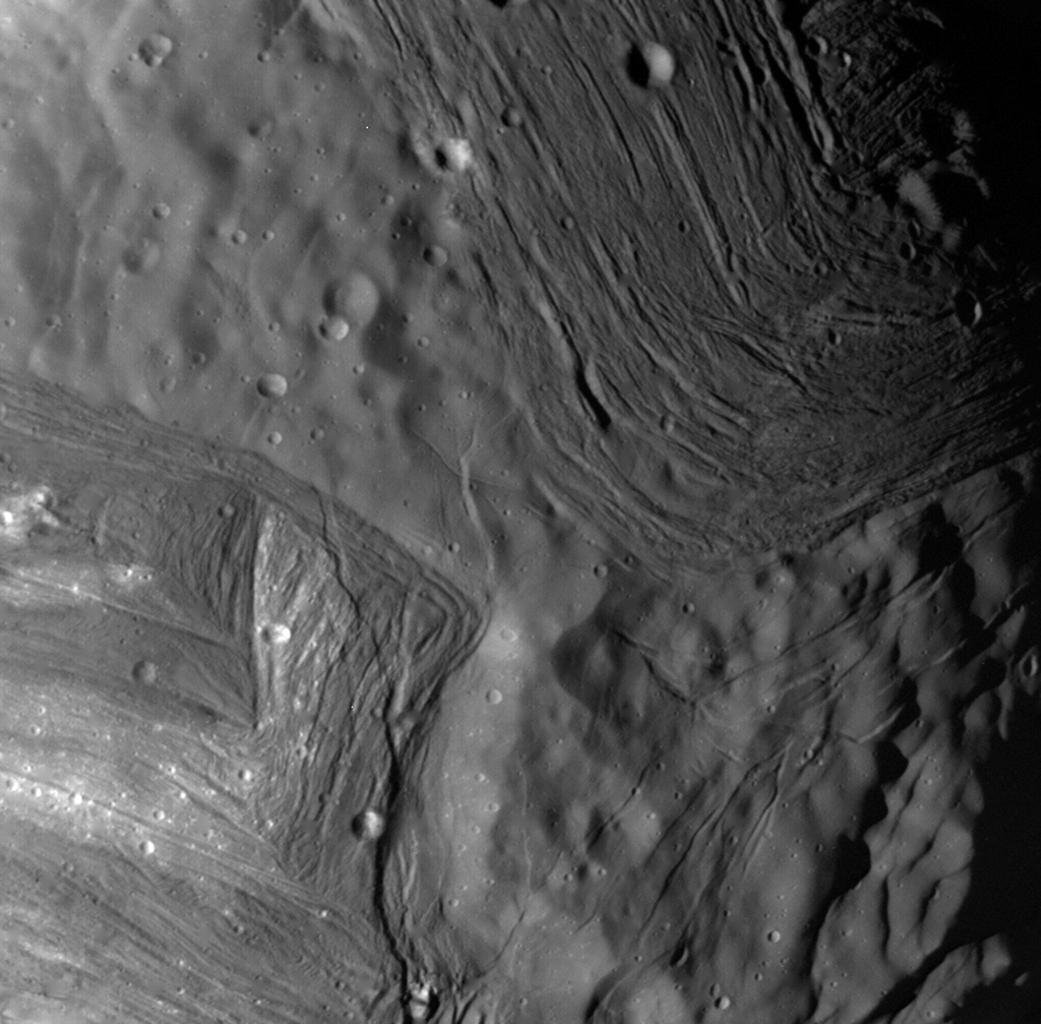
It has a distinctly differing terrain that looks almost like a patchwork of different landscapes.
In one place, Miranda can surprise us with a region full of craters (many 5 km (3 mi) wide), and suddenly, next to it, Miranda’s terrain changes and exhibits lots of massive mountain ridges.
There are also other surface features such as huge fault canyons as deep as 20 km (12 miles), terraced layers, an unusual ‘chevron’ figure and rolling plains.
But perhaps one of the most bizarre features of Miranda that clearly demonstrates its dramatic past is Verona Rupes – a bizarre cliff that it has been estimated to be from 5 to 10 kilometers (3 to 6 mi) high, which makes it the tallest known cliff in the Solar System.
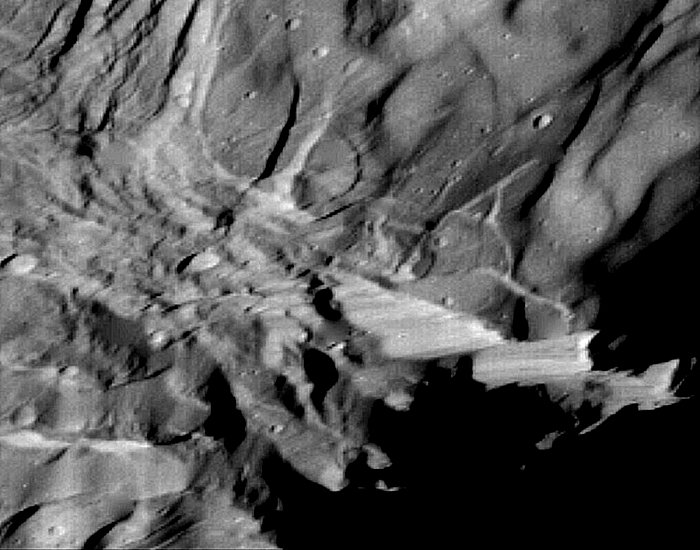
What did form Miranda’s dramatic surface?
It has been suggested that this mixture of different terrain types on older and younger surfaces was caused by a large diversity of tectonic activity. Violent impacts battered Miranda’s surface in the past, and tidal heating caused by Uranus’s gravitational pull.
See also:
Doomed Moons Of Uranus – Cupid And Belinda Are On Collision Course
Winds On Uranus And Neptune Can Reach Supersonic Speeds
Unique Extraterrestrial Aurora Photographed Another Wonder Of Our Solar System
Miranda – the smallest and innermost of Uranus’s five round satellites – was discovered as the last, in 1948 before Voyager 2 made its Uranus flyby and observed Miranda, which located closest to the planet.
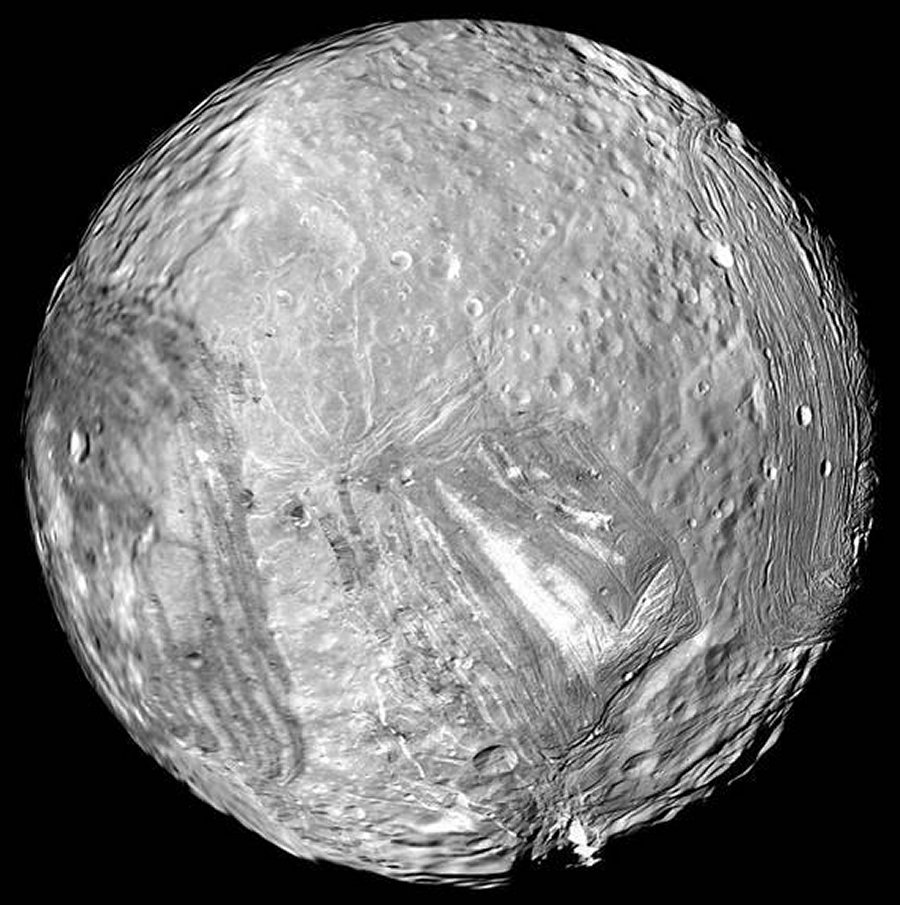
Until now, there is no sure explanation as to why Miranda’s surface looks like it does. One theory suggests that this moon must have been destroyed and then built up again thanks to gravity. But there is also another plausible theory, which suggests that a small Uranus’ moon, Ariel, and Miranda were once in “conflict” with each other, which made them both to be heated. When Miranda was heated up, some areas sank together and that is what we see today on its surface.
Some astronomers argued that Miranda was once crushed by collision with an asteroid but it managed to pull itself together again into a single body.
There is also another possibility that this moon froze when it was in a stage of its forming when rock masses were still sinking to Miranda’s interior and lighter chunks of ice were rising to the surface.
Written by A. Sutherland – MessageToEagle.com Senior Staff Writer
Copyright © MessageToEagle.com All rights reserved. This material may not be published, broadcast, rewritten or redistributed in whole or part without the express written permission of MessageToEagle.com
Expand for referencesRelated Posts
-
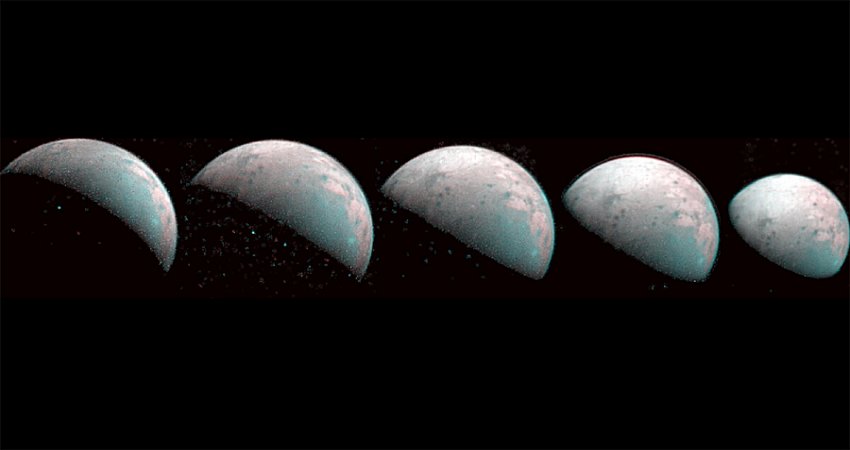 Juno Spacecraft Captures First Images Of Moon Ganymede’s North Pole
No Comments | Jul 27, 2020
Juno Spacecraft Captures First Images Of Moon Ganymede’s North Pole
No Comments | Jul 27, 2020 -
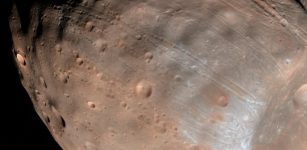 Strange Grooves On Phobos Were Made By Rolling Boulders – New Study Suggests
No Comments | Nov 21, 2018
Strange Grooves On Phobos Were Made By Rolling Boulders – New Study Suggests
No Comments | Nov 21, 2018 -
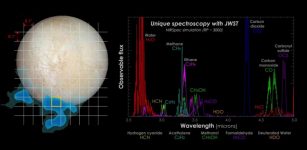 Webb Telescope Nearly Set To Explore The Solar System
No Comments | May 20, 2022
Webb Telescope Nearly Set To Explore The Solar System
No Comments | May 20, 2022 -
 Chemically Peculiar Star HD74423 Is Pulsating Only On One Side
No Comments | Mar 10, 2020
Chemically Peculiar Star HD74423 Is Pulsating Only On One Side
No Comments | Mar 10, 2020 -
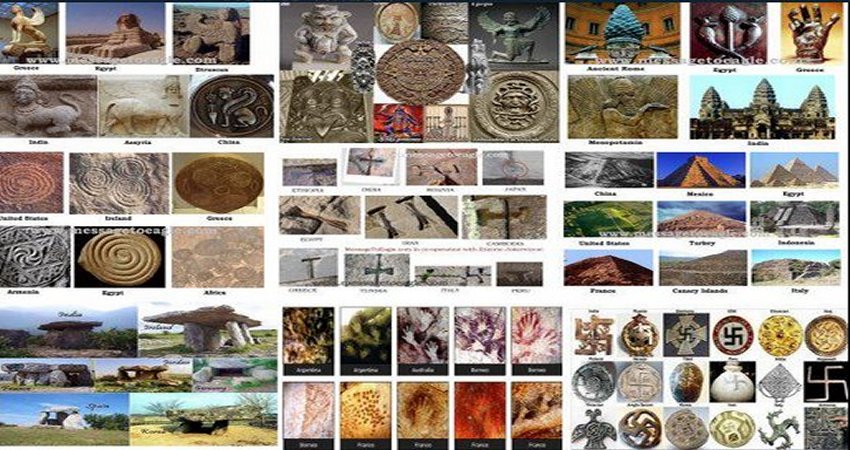 10 Remarkable Similarities Between Ancient Civilizations
No Comments | May 17, 2020
10 Remarkable Similarities Between Ancient Civilizations
No Comments | May 17, 2020 -
 Mysterious Object Unlike Anything Astronomers Have Seen Before
No Comments | Feb 1, 2022
Mysterious Object Unlike Anything Astronomers Have Seen Before
No Comments | Feb 1, 2022 -
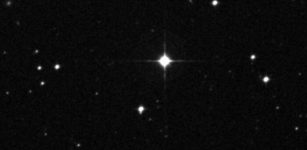 Astronomers Find ‘Gold Standard’ Star In Milky Way
No Comments | May 11, 2022
Astronomers Find ‘Gold Standard’ Star In Milky Way
No Comments | May 11, 2022 -
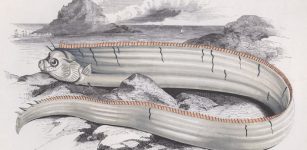 Is The Ancient Oarfish Legend Warning Of Coming Earthquakes True?
No Comments | Feb 28, 2017
Is The Ancient Oarfish Legend Warning Of Coming Earthquakes True?
No Comments | Feb 28, 2017 -
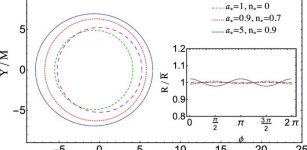 First Black Hole Image: A Gravitomagnetic Monopole As An Alternative Explanation
No Comments | Nov 18, 2021
First Black Hole Image: A Gravitomagnetic Monopole As An Alternative Explanation
No Comments | Nov 18, 2021 -
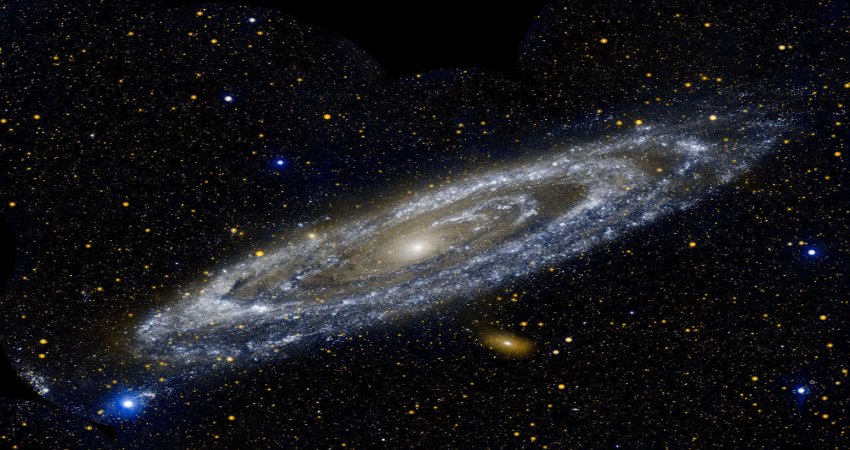 White Dwarfs Are Responsible For Formation Of Cosmic Carbon In Our Universe – New Study
No Comments | Jul 16, 2020
White Dwarfs Are Responsible For Formation Of Cosmic Carbon In Our Universe – New Study
No Comments | Jul 16, 2020
